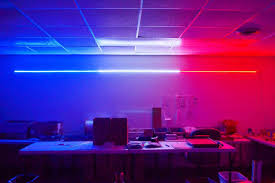
Breaking News
 The MSM want you afraid of your "indoor air quality". Here's why.
The MSM want you afraid of your "indoor air quality". Here's why.
 President, Party, or Principle: What Should MAGA Stand For?
President, Party, or Principle: What Should MAGA Stand For?
 BRICS at Rio de Janeiro: And What Next?
BRICS at Rio de Janeiro: And What Next?
 Public Companies Building Crypto Reserves With Bitcoin, XRP and $TRUMP Purchases
Public Companies Building Crypto Reserves With Bitcoin, XRP and $TRUMP Purchases
Top Tech News
 Insulator Becomes Conducting Semiconductor And Could Make Superelastic Silicone Solar Panels
Insulator Becomes Conducting Semiconductor And Could Make Superelastic Silicone Solar Panels
 Slate Truck's Under $20,000 Price Tag Just Became A Political Casualty
Slate Truck's Under $20,000 Price Tag Just Became A Political Casualty
 Wisdom Teeth Contain Unique Stem Cell That Can Form Cartilage, Neurons, and Heart Tissue
Wisdom Teeth Contain Unique Stem Cell That Can Form Cartilage, Neurons, and Heart Tissue
 Hay fever breakthrough: 'Molecular shield' blocks allergy trigger at the site
Hay fever breakthrough: 'Molecular shield' blocks allergy trigger at the site
 AI Getting Better at Medical Diagnosis
AI Getting Better at Medical Diagnosis
 Tesla Starting Integration of XAI Grok With Cars in Week or So
Tesla Starting Integration of XAI Grok With Cars in Week or So
 Bifacial Solar Panels: Everything You NEED to Know Before You Buy
Bifacial Solar Panels: Everything You NEED to Know Before You Buy
 INVASION of the TOXIC FOOD DYES:
INVASION of the TOXIC FOOD DYES:
 Let's Test a Mr Robot Attack on the New Thunderbird for Mobile
Let's Test a Mr Robot Attack on the New Thunderbird for Mobile
 Facial Recognition - Another Expanding Wolf in Sheep's Clothing Technology
Facial Recognition - Another Expanding Wolf in Sheep's Clothing Technology
The Hidden Health War Between Blue and Red Light in Your Life

Something amazing happened to the people affected due to the unavoidable temporary effects of low-level stimuli during the blackout: A behavioral shift occurred, and there were implications.
In contrast, this article looks at the potential health threats and health benefits of different light sources and how they impact your body. It should go without saying that the ability to discern the healthy from unhealthy light sources is key. Therefore, this article is about protecting yourself.
In retrospect, the term 'smart' sends alarm bells ringing for many of us. The term is a cover-arm and, in truth, means anything but 'smart' for those of us affected.
For instance, we have 'smart' 15-minute cities: planned, confining, freedom-restricting neighborhood units. Then there are ' smart' CBDC payment systems sold to us under the guise of safe, convenient, and efficient, while hiding the fact that they will be used to monitor and control our every aspect, as with 'smart' 15-minute cities.
'Smart' screen technology is another questionable application. This standard visual display technology, now used on all mobile devices, computer screens, TVs, and lighting sources, has the potential to make us physically and mentally unhealthy.
One unhealthy aspect of this 'smart' technology is the use of blue LED.
Originally, there were only green and red light LED sources. The development of blue LED took over 30 years, as it was an extremely difficult technological challenge. Finally, it was brought into existence through the pioneering work of Japanese engineer Shuji Nakamura.
Blue and a combination of the other LEDS' green and red converge to give white light, and all other colors are produced through the various combinations of these 3 primary colors. Hence, the developmental breakthrough that brought 'smart' screens into existence.
However, the blue LED light emitted in the frequency range of around 400-500 nanometers (nm) ( see above photo) may give rise to ill-health. Especially when subjected to frequent and long-term.
Melatonin is a hormone essential for sleep. Exposure to this blue light increases awareness while suppressing the body's melatonin production, resulting in a lack of sleep. Blue light also impacts circadian rhythms as well as sleep patterns. Further, poor physical health, anxiety and depression may prevail due to a lack of sleep.
Thus, in effect, the suppression of melatonin due to blue light exposure from mobile devices, computer screens, TV's and lighting sources makes this LED a significant potential health threat.



